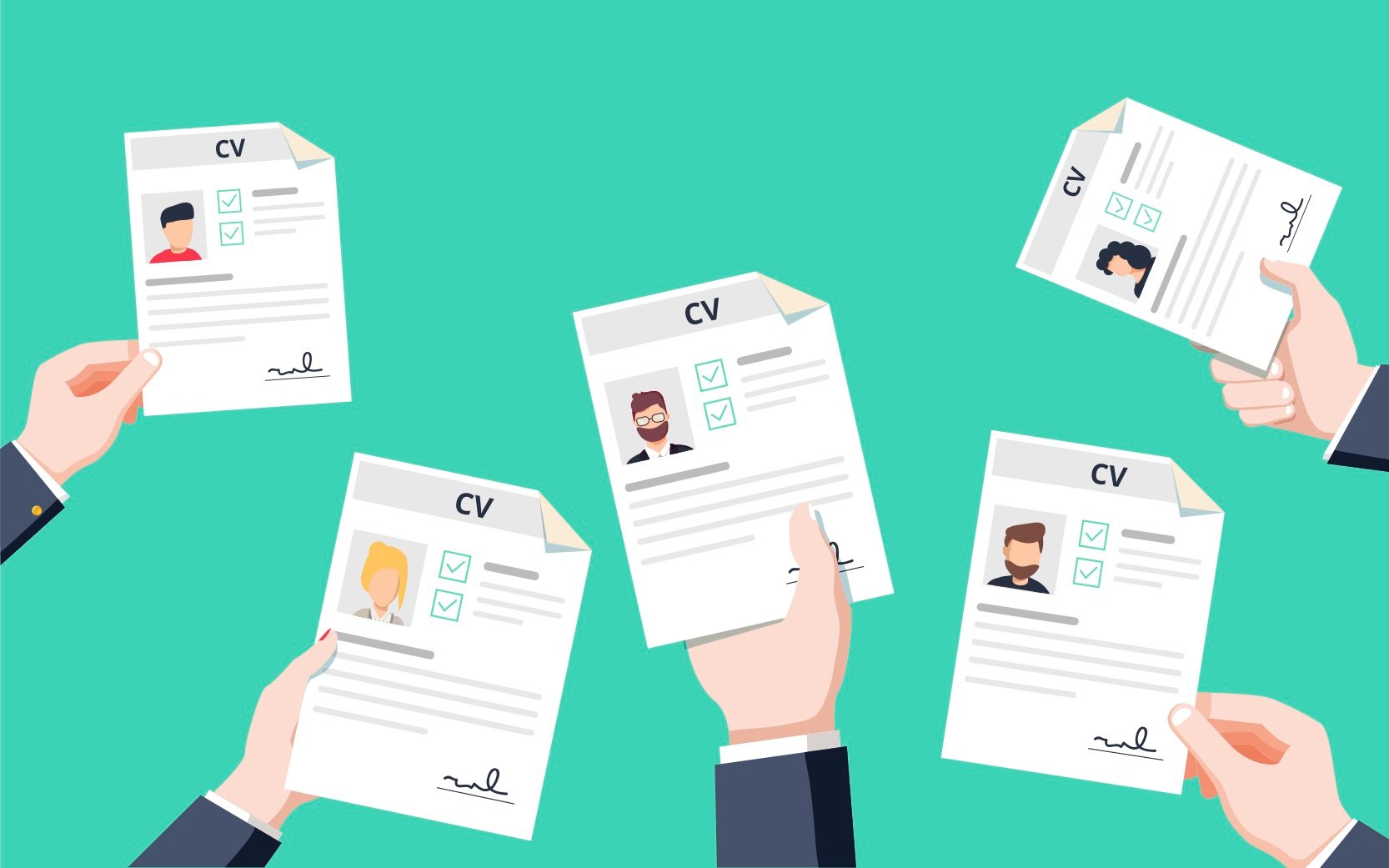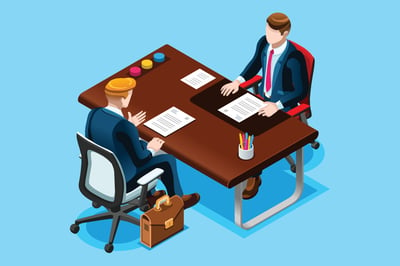April 10, 2019
 by Daniella Alscher / April 10, 2019
by Daniella Alscher / April 10, 2019

There’s no doubt about it: graphic designer’s resumes can look awesome.
If you’re looking for a job in graphic design, don’t forget that more than 250,000 other people are, too. The resume you submit to a hiring manager, along with your graphic design cover letter, is your first impression and your initial chance to make yourself stand out from the crowd.Your graphic design resume should contain all of the basic necessities with a little extra pizazz. Let’s take a look at what some of the pros include (and feel free to jump ahead to any of the following sections using the links below).
Your name
Contact information
A summary
Your skills
Work history
Your education
Certifications
We're going to go over how to make these all pop out a little bit so that you can stand out amongst the crowd, but before we do, I want to address something to avoid.
There's a few problems with this resume/milk carton.
The first problem: there’s a lot to see here. Colors, shapes, pictures, and a three dimensional object. As a piece of art, maybe. As a resume, probably not the best idea. It’s going to take a few rotations to see information that should be much more easy to access.
The colors and design are powerful, but could overshadow the important information that the applicant is providing within. Additionally, hiring managers like to keep resumes handy so that they and the interviewers have something to refer back to. Where are they going to keep a carton?
This isn’t to say that your resume can’t be creative. In fact, some people have gotten really clever and still manage to keep their resume appropriate when they create an infographic resume.
In this article, we’re going to hit a point in between the traditional resume and the infographic resume.
And we’re going to stay far away from a milk carton.
The following are all of the elements that should be in your resume, along with some ways to spice them up.
Obviously! Your name should be one of the focal points of your resume. This can be done with enlarged text, color, and borders.
Often, designers include a headshot, but it’s definitely not required. It just helps the hiring manager get a better idea of who you are and makes you seem like a little more to them than just another piece of paper.
This graphic artist figured out some neat ways to display headshots alongside names:
This should probably go without saying, but if you want to hear back from the hiring manager, you’re going to have to give them a way to get in touch
At the very least, you should be including your phone number, email, and a link to your online graphic design portfolio.
Social media platforms can (and should) be added to your portfolio. Right now, the most important thing for the hiring manager to see is that they have a way of getting back to you.
Your contact information shouldn’t stray too far from your name, as those two things are naturally linked. Contact information should not draw as much attention as your name, but that doesn’t mean it shouldn’t draw any at all. You’ll want to make that information stand out, whether that means bolding the text or framing it in a different color.
Here's a few different ways to do it:
While putting an objective is a little out of date, there’s some professionals that choose to do this so that HR can get a better understanding of what they’re looking for.
Instead, we’re going to title this section “Summary” or “Profile”. The reason for this is because most hiring managers know what your objective is: to get a job as a graphic designer.
Instead, use this section to give a little sneak peek into your resume and cover letter by quickly going over (in about two to three sentences) the qualifications you have as a graphic designer. Think of this as something similar to your LinkedIn profile’s summary. You may want to include the amount of experience you’ve had and your interests.
This section could be paired with your name and contact information, or can be a section on its own like the ones below:
If you’re applying to be a graphic designer, Microsoft Word may be a good skill to have, but it probably shouldn’t be at the top of your list. Graphic design skills are probably a little different than the skills of a salesperson.
List the skills that make you unique as a graphic designer and those that would make you particularly attractive for the position you’re applying to.
In terms of formatting, graphic designers have the privilege of being a little more visual than anybody else in their resumes. If you’re an expert in Adobe Creative Suite but only know a little HTML, there’s an abundance of different ways to let the hiring manager know.
Source: KickResume
Don’t want to get that fancy? You don’t have to display it this way at all! Simple lists still work, but as a graphic designer this is an opportunity to visually display your skills, so keep that in mind. These graphics aren’t just cool, they also let the hiring manager know exactly how comfortable you are in each of your skills.
This is one of the most important parts of your resume. It tells employers where you’ve been and what you’ve done so far.
As a graphic designer, you may already have some experience under your belt: freelance gigs, internships, other full-time graphic design jobs, etc. Include any jobs that would be relevant to the one you’re applying for. Under each job, you’ll want to include the dates you worked there, the name of the company you worked for, as well as the responsibilities you had while you were there. Did you make a sweet brochure? Make sure it's reflected on your resume.
When listing out your work history, reverse-chronological order is your best bet. By putting your most recent experience at the top, you’ll be letting the hiring manager know what your capabilities are to date, right off the bat.
The classic work-experience paradox: every job requests you have ‘X’ amount of years of experience in the industry. Where are you supposed to get that experience if every job requires it?
While it may be hard for an aspiring journalist or marketer to find experience, there’s tons of opportunities for a graphic designer to get experience without even having to leave the couch.
Look up some practice briefs or contests online and participate in them. You can even step out and offer to design a logo for a local business or a club at school. These can all be displayed in your portfolio and alluded to in your resume as freelance projects.
It’s important to include your education experience on your resume. It doesn’t matter if your degree was in graphic design or in engineering. It doesn’t even matter if you have a degree. Any and all education should be included. This is to show employers that you meet their minimum education requirements for the position.
If you were on the executive board of a graphic design club or helped design a university department’s website, you should probably include that as well.
Anyone can say they know a program or a technique inside and out, but a great way to prove that to a hiring manager is with a certification. Graphic designers can show off their creative skills in a portfolio all they want, but to be certified in a type of design software can really put you ahead of the pack. It proves that you not only have the creative skills to apply within the program, but you understand the software’s technicalities.
TIP: Not sure which graphic design software to master first?
When including certifications in your resume, make sure you include the year you earned them. Because software and programs are constantly updating, certifications are too. Some only last a few years before you have to take the test all over again. Everything listed should be up to date.
Now that we’ve gotten a chance to go over all of the important elements of a resume and how professionals often display them, it’s important to see what it looks like when everything is put together.

Source: Behance
This resume embodies exactly what we’ve already discussed above. Axel Martian provides the hiring manager with a resume that calls attention to his name. He has a summary next to his headshot and provides the necessary contact information. His also includes his education and provides a reverse-chronological listing of his experiences. Finally, he makes the viewer aware of his skills in a unique and elegant way. This example uses color and shapes, but not to the point where it is distracting for the viewer. Instead, the colors and shapes compliment the overall feel of the resume and make it pleasant to look at.
I could look at it all day.
Source: Refinery Resume Co
Here’s a resume that’s different than the first one yet still manages to check all of the same boxes. Madison George’s resume has her name in the top left corner instead of centered, but the font is still large and attention-grabbing. She includes her skills and displays their measurements with bars. She includes her profile at the top and separates it from the remainder of her resume. Her experiences are listed in reverse-chronological order, and all of her educational experiences are displayed below. At the footer, she provides her contact information and highlights it in off-white to make it stand out from the above information. This resume works with multiple colors but chooses calm shades so as not to overwhelm the viewer. She also uses little icons next to each section as a way to visually differentiate between them.
I’d say this one is pretty easy on the eyes as well.
Success!
It’s important to balance the visual elements of your resume with the content itself. Don’t forget that a graphic designer’s resume isn’t supposed to be the Cirque Du Soleil of resumes; it’s just supposed to make you stand out and, of course, be well-designed. No need to send a milk carton.
It’s all about injecting a little more personality into your resume as a designer than the average person would. Make it funky, add some color, but remember the position you’re applying for and what the hiring manager wants to see. If you’re applying to work in-house, it’s best to keep the exciting ideas to the online portfolio. If you’re applying for a company that’s a little younger, maybe an infographic resume wouldn’t be too risky.
You know how to design a resume. Here’s how to actually write a resume.
Daniella Alscher is a Brand Designer for G2. When she's not reading or writing, she's spending time with her dog, watching a true crime documentary on Netflix, or trying to learn something completely new. (she/her/hers)
Some may think that a cover letter isn't necessary for graphic design.
 by Daniella Alscher
by Daniella Alscher
Standing out from the crowd is a great feeling.
 by Daniella Alscher
by Daniella Alscher
You’ve slaved away for years studying, scaling, aligning, kerning, and saturating.
 by Daniella Alscher
by Daniella Alscher
Some may think that a cover letter isn't necessary for graphic design.
 by Daniella Alscher
by Daniella Alscher
Standing out from the crowd is a great feeling.
 by Daniella Alscher
by Daniella Alscher


